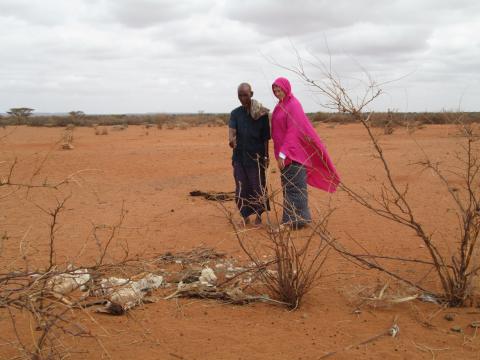Dolow Somalia: The Perfect Storm

I just returned from Dolow district in South Central Somalia. I was there to conduct research and gather community perspectives on their long term development needs.
Everyone that I spoke to could not even think beyond tomorrow due to the current drought gripping the country. I was told that this “is the worst drought we have ever seen” at least a dozen times in two days.
The drought that has taken hold of Southern Somalia is the result of poorly performing/failed rains during the Gu, the main rainy season in March - April.
Combining the poor rains against a backdrop of already shocking development indicators such as food insecurity, high rates of malnutrition and lack of basic services to many of the population, plus the on-going disrupting planting seasons and causing population displacement and limited safe supply routes, you get what the humanitarian community has been calling “the perfect storm” – a set of conditions in many ways looking like the 2010 post-famine scenario in Somalia.
Water and food is what everyone is asking for. It was hard for me to grapple with the reason I was there - to discuss a fair justice systems, a constitution and equitable and affordable social services when the needs of the average Somali is basic services to survive through the day.
A group of displaced women told me with dismay that they knew of families that have not had a meal in at least two days. The chairman of the riverine farming community took me on a tour of animal carcasses around his community to drive home the extent to which the drought was devastating livelihoods. I counted over 12 dead cows, goats and even camels mixed amongst dead thorn bushes and dry scorched earth.
When a group of school children were asked to draw their communities, they drew dead trees next to a waving Somali flag. Even the business men and women who trade in Dolow town said that they are too are suffering from the effects of the drought, the community members they provide with credit cannot repay their loans, forcing the smaller businesses without equity to shut down.
I was in this same region just one year ago, even visiting the same riverine communities, and I remember thinking how green and lush the farms were and how alive the desert was - now, as I looked out it was an ominous display of what disaster is to come if the next rains perform poorly.
I left Somalia depressed. The country has been on a slow but steady path to recovery since the devastating drought and famine of 2010 but now it is back to a place where it could relapse into famine.
What is urgently needed today is humanitarian and resilience funding to continue to mitigate risk before the next shock hits while we continue to respond with lifesaving interventions to save lives today. While long-term development is key to a prosperous and peaceful Somalia, we must achieve a balance between the envisioned future and the reality of today.
By Jennifer Jalovec, Senior Advocacy Manager, World Vision Somalia

